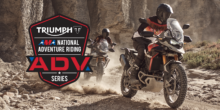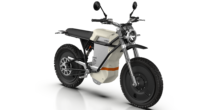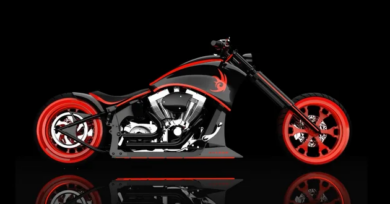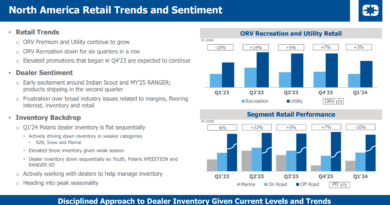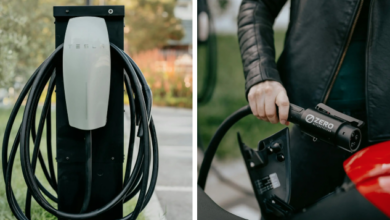Dec. 24, 2007 – A rarity in rural America
By Tom Kaiser
ATV Editor
With shape-shifting hills, endless whoops sections and steep bowls to carve, sand dunes can be a popular ATV tourism spot. Unfortunately, as rare as dunes are, geographically speaking, it is especially uncommon for such terrain to become available to recreational riders.
But such a prized area has opened up recently in rural western Kansas, an area known for agriculture and not much else. The small town of Syracuse is hoping its new sand dunes park will attract riders and tourism dollars from across the country.
In the beginning
The ancient Syracuse dunes were previously private property that was occasionally, and unlawfully, used by dirt bike riders in the 1960s and ’70s. The land was brought under the city’s domain in 1995 after the town purchased it for its municipal water works. After lying dormant for a few decades, an ambitious mayor and city council have dusted off the dunes and created a managed riding area aimed at sand enthusiasts far and wide. The town’s goal is a world-class riding park that will spur the economy.
Local investment was the first step. While the city owned most of the 1,300-acre dune field, it needed additional land to construct a mile-long entrance road. A $10,000 grant from the Polaris T.R.A.I.L.S. Grant Program eased the financial burden and allowed the city to hire a park manager and bring in an office building.
Jenny Frey, the new park’s manager, says the park has 65-feet high hills and a 7.5-mile perimeter that takes approximately 12 minutes to circle. She said the park should appeal to local riders and those from outside the area, who might already pass through Syracuse to reach the popular Little Sahara sand dunes in Waynoka, Okla.
“We have [dunes] right here in our own back yard,” she said. “This small town is kind of dying out, and we’re trying to keep our own money here in our own town. Plus if you can bring in some from outside of town that would be great, too.”
Frey might be onto something. After visiting the site, Sand Sports Magazine said the park could generate up to 500,000 visitors per year and contribute $5 million-$10 million to the area’s economy.
Finding TRAILS
Mollie Wulff, the T.R.A.I.L.S. grant program manager at Polaris, said the park matches the program’s intention to provide grassroots assistance to clubs looking to enhance the riding experience and provide new riding opportunities in remote or particularly serene areas.
“It’s just so unusual for a [sand dune] park of that scale to open anywhere, much less in Kansas,” she said. “It was such a well-developed plan, and it would draw from the Midwest.”
Exceeding Expectations
Syracuse Public Works Director and City Administrator John Armstrong said the idea of a riding park has been a city initiative since purchasing the property in 1995.
“We get 16 inches of annual rain, so we’re in a pretty dry area to begin with,” Armstrong said. “That area has been ranch country for some many years, and on dry years they wouldn’t even put cattle on it because there wouldn’t be anything for them to eat.”
He says the local investment has been minimal, and the Polaris grant was the key. Since opening in July, the number of visitors has been above expectations, helping the park meet its long-term goals much sooner than expected. Syracuse initially planned for the park to become self sufficient in three years.
“We are actually quite a ways ahead of our expectations this year,” he said. “We opened July 4th, and I think our revenues for the year were somewhere over $13,000.”
While 50 acres of the sand pit area has been set aside for fishing and camping, the remaining land will include beginner, children and family areas, as well as an extreme sporting grounds. Each space will be designated by signage and managed by park employees.
In the near future, the town is planning to add shower and restroom facilities and modern camping, in addition to the primitive campsites already open. Long term, Armstrong says the city hopes to expand the park’s acreage.
According to its grant application, the park hopes to draw from the approximately 7 million residents of Colorado’s front range, including Colorado Springs and Denver. Frey says riders have already rolled in from California, Texas, Minnesota and Florida, some exclusively traveling to ride in the Syracuse sand.
Banking on Development
Armstrong says the city hopes the increased tourism will attract a powersports dealership, service facility and another hotel to what’s now a “one-hotel town.” Beyond that, he notes, the economic diversity will make the town less susceptible to the ups and downs of the agriculture industry.
“In the sand park’s case, this is something that doesn’t affect agriculture or won’t be affected by it,” he said. “That’s something we haven’t ever been able to achieve until this point.”
No matter the result, Armstrong says it’s important to add another component to a local economy. He adds the park is particularly helpful because it utilizes land that has little agricultural value and, unlike a factory, the park generates minimal pollution and won’t drain the town’s finite water supply.
“Our long-term goal is to add a little bit of viability to the community,” he said.

